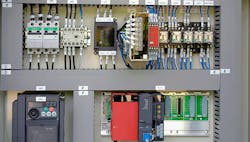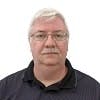With all the concern about getting components these days, it might be good to talk about something else for a change. It’s all too easy to focus on the negativity when times are tough, but tough times often bring out the best in us, and creativity can lead to great results.
In the nearly 35 years that I have been in this business, I have had the pleasure of knowing and working with some great control designers.
Also read: Terminate the rat’s nest
At various times in my career, I have been exposed to many different industries—plastics, material handling, automotive, mining, petroleum, food packaging and machine building, to name some of the more memorable ones—and I would like to think I have taken a few things away from each experience and made those techniques part of my preferred approach to control design.
My initial foot in the water, so to speak, was working as a CAD operator for a startup engineering company back in Canada—in my opinion, this was the best way to learn about design. While drawing lines on a virtual paper, I was going through the process of recreating the system that the designer had sketched out to me.
Ever so subtle, the very act of connecting all the wires in a graphical representation was teaching me important steps about my later career in design. Power and control schematics, cable diagrams, pneumatic diagrams, control panel layouts, equipment location diagrams, bills of material—these are the foundation of any design and are the base upon which a design comes to life.
While we parted ways many years ago, that startup company is now one of the top engineering companies in North America, at least, and I am proud to know that I was one of their very first employees.
My long and winding trip around the world of automation has given me a broad view on how controls can be applied to a variety of disciplines, but more importantly it helped me recognize the similarities that exist, no matter the end use of the control system.
Just the other day, I was thinking about my brief stint in the petrochemical sector and how the use of remote I/O systems was essential to an application where the main control panel might be at great distance—yards or meters—from the various processing operations.
By and large, packaging machinery design/build has been my bread and butter. I’ve always liked packaging-machinery design because of the relatively small control system and the centralized control point. Recently, however, I have rediscovered, as it were, the advantage of using remotely located I/O stations and/or machine-mounted I/O modules in even the smallest of machines.
Wiring times are dramatically cut down when all we have to do is bring power and Ethernet from the main control panel to the machine-mounted point instead of landing a great number of individual wires. With on-machine I/O, everything is even plug-and-play using molded cables.
Those early years as a CAD jockey also taught me some great techniques about more subtle but very important things like keeping power, control and network wires away from each other. Some of the features like wireways with separators or parallel wireways and running the power up one side of a control cabinet and control up the other might have been lost on that CAD operator way back when, but they are certainly on my mind when I set about to put a new design together.
We look to keep power and control circuits completely separate from each other—ultimately in separate enclosures—to reduce or eliminate arc-flash considerations. While primarily to protect those who might be exposed to potential dangers, arc-flash separation/avoidance in design also serves to reduce the time to troubleshoot a problem when the person doing the troubleshooting doesn’t have to suit up to enter a live control enclosure.
I recently encountered two different approaches to the same problem of routing wire around a control panel. Ostensibly to keep the power away from the control and network wires, these designs also wandered away from the traditional method of using wireway to bring wires around an enclosure.
The first design was very imaginative. The enclosure starts with the basic standoff backplane panel. However, where the high-voltage items were located—variable and servo drives primarily—the designer had a second panel mounted on top of the base panel. DIN rail ran across in rows—one for the motor circuit protection device and the row below to mount the drives—and the space between each row where one might normally have the wireway; this design has cut out the space instead.
To wire everything up, the power wires would route down, or behind, the top-level panel and could then go in any direction, directly to the power bus or to the component on the row above or below. There’s no need to follow wireways and use up a lot of wire when one can go in any direction, directly to the source or destination.
The control wires would stay on the upper layer and run horizontally only. These wires would be grouped with wire ties to keep them neat but, more important, keep them totally separate from the power wires that run on the sub-layer only. The rows of the adder panel could be closer together because they didn’t need to leave room to get wires in and out of wireways.
The second design I came across has some similarities with the first, but the main difference is this is a complete panel building/wiring system that uses this same primary and sub-layer approach to wiring. In this approach, there is no sub-panel/backplane at all. Each row of DIN rail is mounted on standoffs to create the second layer. The whole enclosure is laid out on a grid of DIN rail on standoffs.
Like the first example, wires are brought from the component, through the “windows” to the sub-layer and wired directly to the next component in the path, without the need to do everything at right angles where great lengths of wire are needed to make the connections.
Also like the first example, the rows don’t need the traditional spacing required when using wireway between the rows of components. Control wires, again, can be kept on the first layer, while the power wires drop back to the sub-layer, keeping power and control separate.
My rows in a conventional panel are usually 6 to 9 inches or more apart to allow room for the mounted component, the wireway and the space needed to get the wires from the component into the wireway. I didn’t do an exact calculation, but, using this panel-building method, I would estimate that I can save at least one-third of the space in an enclosure and likely about as much or more on the amount of linear feet of wire required to navigate the traditional wireway path around the enclosure.
The first example came in the form of a palletizer we recently purchased, while the second example was presented to me by a company out of Canada that has designed a whole system structure for executing this wiring technique and can either build complete panels for customers or can work with the customer to teach them how to implement the wiring system in their own designs.
As the cost of control components seems to be escalating at an alarming rate recently, these two vendors have come up with innovative ways to counter those rising costs by cutting the cost of the wire needed to build the panel.
In the case of the wiring-system vendor, they have come up with a way where an OEM or panel-building entity could just lay out some standard enclosure sizes and pre-assemble the backplane mounting structures, independent of the actual control design.
Incidentally, for a situation like mine, I can’t see us using a full wiring system. While we build a lot of panels here, we are producing replacement control systems for dissimilar products. Each one has enough subtleties that we really can’t just pick an enclosure size or design and make them all the same. That particular product seems more appropriate for an OEM who would make the commitment to the new wiring system and then make everything using that technique.
The first technique, however, is something I might look into for future projects. Being able to cut down on the amount of wire that we use in a panel would definitely have a positive impact on our bottom line.
No matter the inspiration, innovative thinking is never far from the surface of any control design. This is another example of how staying with conventional design methods might make for a more comfortable design environment, but it leaves little room to appropriately respond to price increases from things like a manufacturing lull due to a viral pandemic.
It is way too easy to stay with what we are familiar with, but that can often leave us behind and scrambling to catch up to current trends and market-leading products like the ones I recently encountered.
Rick Rice is a controls engineer at Crest Foods, a dry-foods manufacturing and packaging company in Ashton, Illinois. With more than 30 years’ experience in the field of automation, Rice has designed and programmed everything from automotive assembly, robots, palletizing and depalletizing equipment, conveyors and forming machines for the plastics industry but most of his career has focused on OEM in the packaging machinery industry with a focus on R&D for custom applications. Contact him at [email protected].
About the Author
Rick Rice
Contributing Editor
Rick Rice is a controls engineer at Trew Automation, a material handling manufacturer based in West Chester, Ohio. With over 38 years’ experience in the field of automation, Rice has designed and programmed everything from automotive assembly, robots, palletizing and depalletizing equipment, conveyors and forming machines for the plastics industry but most of his career has focused on OEM in the packaging machinery industry with a focus on R&D for custom applications.

Leaders relevant to this article:


